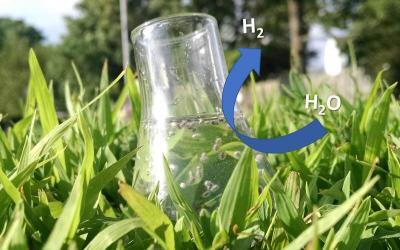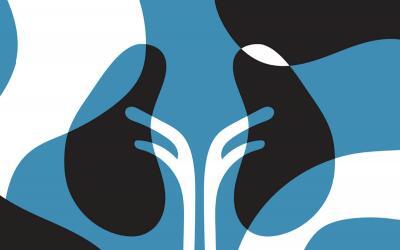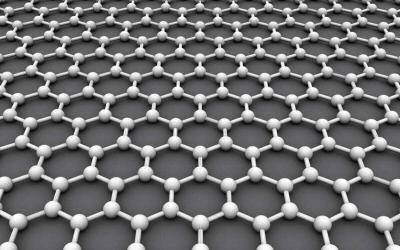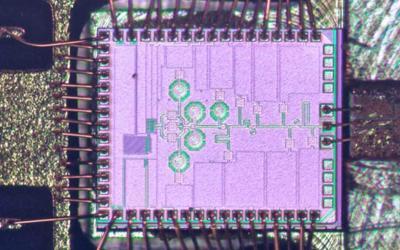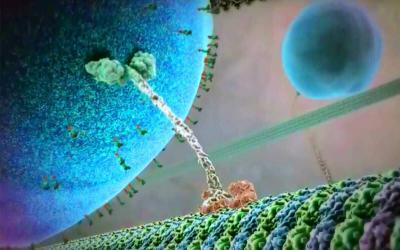Lilly Diabetes helpline Assists People Seeking Affordable Insulin
Lilly Diabetes Solution Center will assist people who need help paying for their insulin – such as those with lower incomes, the uninsured, and people in the deductible phase of their high-deductible insurance plans, Eli Lilly and Company (NYSE: LLY) announced today. A customized suite of solutions for all Lilly insulins, including for Humalog® (insulin lispro), will be used by helpline operators to find answers that best fit the personal circumstances of patients.
Prudential Cleanroom Services Opens Laundry Processing Facility
The project is a 131,371-square-foot commercial laundry facility on a 14.23-acre tract. Prudential says it completed the first of three phases: building a one-story facility that includes offices, industrial space, employee areas and loading docks, with 136 parking spaces on-site for staff.
Ancient Biocrust’s Microorganisms Helped Seas With Nitrogen
Like our oceans, today’s continents are brimming with life. Yet billions of years ago, before the advent of plants, continents would have appeared barren. These apparently vacant land forms were believed to play no role in the early biochemical clockwork known as the nitrogen cycle, which most living things depend on for survival. Researchers discover ancient biocrusts played an important role in the nitrogen cycle.
Gold Nanoparticles Could Improve Solar Energy Storage
gold nanoparticles, coated with a semiconductor, can produce hydrogen from water over four times more efficiently than other methods – opening the door to improved storage of solar energy and other advances that could boost renewable energy use and combat climate change, according to Rutgers University–New Brunswick researchers.
Better enabled kidney exchanges for improved health and cost savings
Platforms for kidney exchanges such as the National Kidney Registry and the Alliance for Paired Donation provide a lifeline for people on the waiting list by expanding the pool of potential donors by matching potential recipients with living donors they’ve never met.
Water Evaporation Controlled by Graphene
The study, carried out by a team from the Chinese Academy of Sciences and the Collaborative Innovation Center of Quantum Matter (Beijing), looked at the interactions of water molecules with various graphene-covered surfaces.
Molecular clock could greatly improve smartphone navigation
MIT researchers have developed the first molecular clock on a chip, which uses the constant, measurable rotation of molecules — when exposed to a certain frequency of electromagnetic radiation — to keep time. The chip could one day significantly improve the accuracy and performance of navigation on smartphones and other consumer devices.
Neutrino Distant Cosmic Source Identified
Neutrinos, Italian for “little neutral ones,” are often described as “ghost particles,” for their extremely weak interactions with ordinary matter. Indeed, billions of neutrinos stream through our fingernails every second, without ruffling so much as a molecule of matter. And yet, on Sept. 22, 2017, the IceCube Neutrino Observatory, based at the Amundsen-Scott South Pole Station, detected a neutrino in signals picked up by its detectors buried deep in the Antarctic ice. Researchers there quickly sent out alerts to ground- and space-based telescopes in hopes of finding the neutrino’s cosmic source.
Sensile Medical is Being Acquired by Gerresheimer AG
Gerresheimer will acquire the Swiss technology company Sensile Medical and thereby significantly expand its business offerings. For the Sensile Medical business, this will open up new opportunities and synergies with existing and potential new customers.
Kinesin Proteins Study New Doors Open for Cancer Drug Innovation
The research involved kinesin proteins: tiny, protein-based motors that interact with microtubules inside cells. The motors convert chemical energy into mechanical energy to generate the directional movements and forces necessary to sustain life. Microtubules are microscopic tubular structures that have two distinct ends: a fast-growing plus end and a slow-growing minus ends. Microtubules help make up a cell’s skeleton.
Flexible Packaging Cleanroom Expansion
Today PPC Flexible Packaging announced it has completed the first phase of a greater than $2 million facilities and equipment investment aimed at expanding and further upgrading production capacities for its Precision Clean™ cleanroom packaging business. The company purchased its Buffalo Grove based business as Fisher Container Corporation in February 2017.
X-Ray Experiment Confirms Theoretical Model for Making New Materials
X-Ray Experiment – Over the last decade, scientists have used supercomputers and advanced simulation software to predict hundreds of new materials with exciting properties for next-generation energy technologies. Now they need to figure out how to make them. To predict the best recipe for making a material, they first need a better understanding of how it forms, including all the intermediate phases it goes through along the way – some of which may be useful in their own right.



